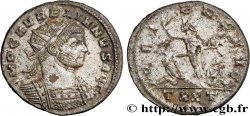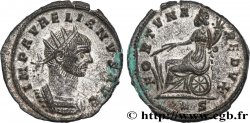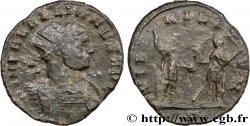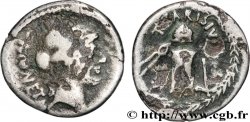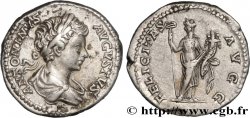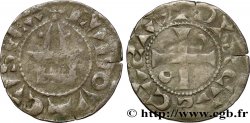brm_639626 - AURELIAN Antoninien
Not available.
Item sold on our e-shop (2023)
Price : 90.00 €
Item sold on our e-shop (2023)
Price : 90.00 €
Type : Antoninien
Date: printemps 274
Mint name / Town : Roma
Metal : billon
Millesimal fineness : 50 ‰
Diameter : 21 mm
Orientation dies : 5 h.
Weight : 3,50 g.
Rarity : R1
Officine: 8e
Coments on the condition:
Monnaie idéalement centrée. Superbe buste. Joli revers. Patine grise
Catalogue references :
Predigree :
Exemplaire provenant du trésor de Guercheville
Obverse
Obverse legend : IMP AVRELIANVS AVG.
Obverse description : Buste d’Aurélien, tête radiée, à droite, avec cuirasse et pan de paludamentum, vu de trois quarts en avant (B01).
Obverse translation : “Imperator Aurelianus Augustus”, (Empereur Aurélien Auguste).
Reverse
Reverse legend : ORI-ENS AVG// VIII.
Reverse description : Sol (Le Soleil) radié, nu, le manteau sur l’épaule gauche, debout à gauche, levant la main droite, tenant un globe de la gauche, et posant le pied droit sur un prisonnier assis les mains liées dans le dos ; à ses pieds, à droite, un autre prisonnier assis, les mains liées dans le dos.
Reverse translation : “Oriens Augusti”, (L’Orient de L’Auguste).








 Report a mistake
Report a mistake Print the page
Print the page Share my selection
Share my selection Ask a question
Ask a question Consign / sell
Consign / sell
 Full data
Full data